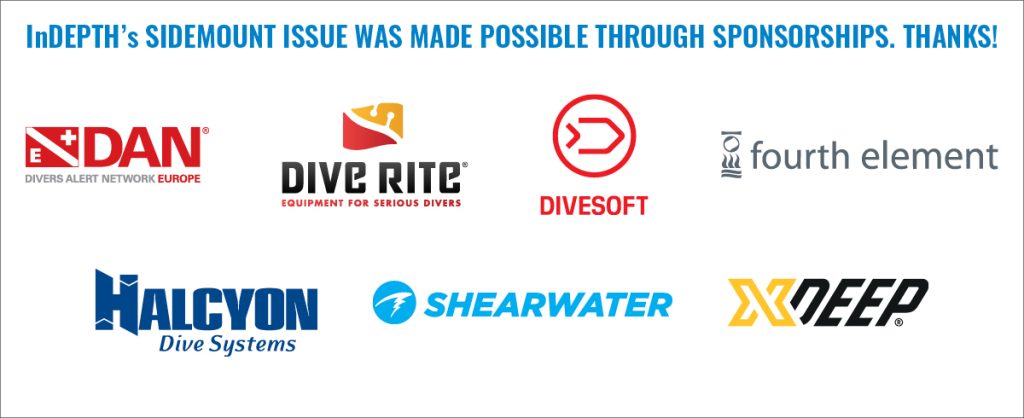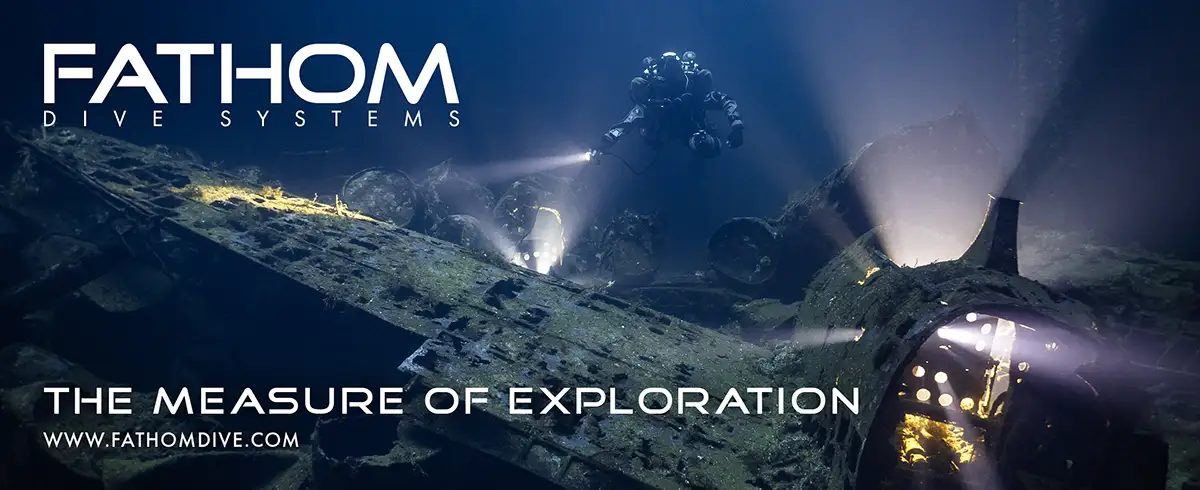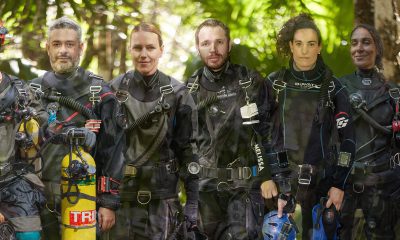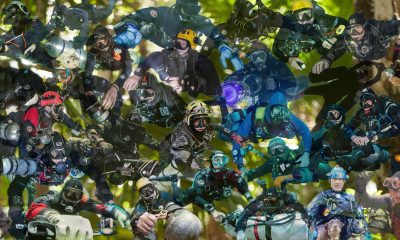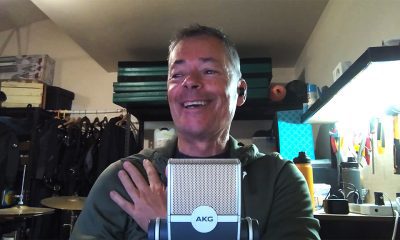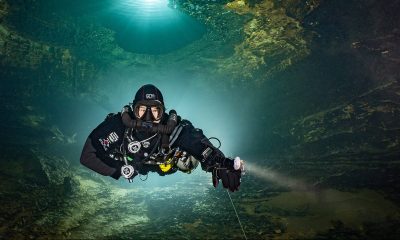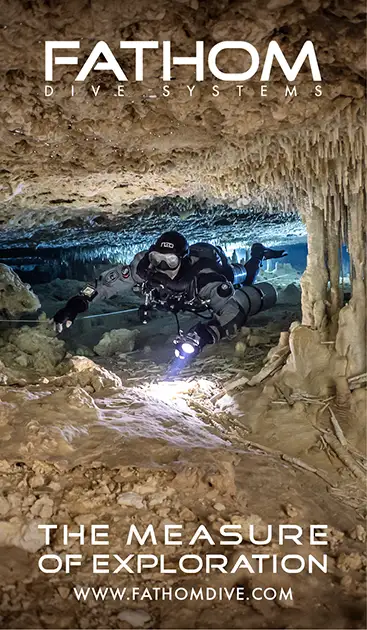Community
The Who’s Who of Sidemount

Natalie Gibb
Natalie L Gibb’s passion in life is underwater cave exploration and conservation. With her exploration partner Vincent Rouquette-Cathala, she has led her team to discover over 20 previously unknown cave systems in Mexico’s Yucatan Peninsula, mapping more than 90 kilometers of cave passageways. She is a public speaker, author, photographer, and member of the Woman Divers Hall of Fame, where she additionally serves on the board of trustees. Natalie is co-owner of Under the Jungle, a cave diver training center in Mexico, and is a TDI Cave Instructor and Instructor Trainer.
Interview by Michael Menduno
What is sidemount to you?
Like any equipment configuration, sidemount is a means to an end. It is one of many tools in a technical diver’s toolbox that allows for exploration of the underwater world. As a cave diving instructor in Mexico, I prefer sidemount to backmount for many reasons.
A properly configured sidemount system places a diver’s valves and regulators in a protected and accessible location: the diver’s armpits. While it is never the goal to impact the cave, this location reduces the chance of damaging vital life-support equipment. My shoulders will heal — my regulators will not! Furthermore, in the event of a leak from the first stage, a diver can visually assess the issue themself, leading to more efficient problem-solving. In many cases, it is possible to repair a leak underwater, and when a leak cannot be solved, a diver can feather their tank valve to access gas from the hemorrhaging cylinder. There are many more options for self-rescue in sidemount than in backmount. Of course, this only helps if you actually train these procedures during your sidemount and cave courses.
The profile of sidemount is flatter than the profile of backmount. For many of the caves in Mexico, this allows access to lower passageways where the taller profile of backmount does not fit. As with most things in life, this flatter profile comes at a cost: divers are wider in sidemount, meaning narrow tunnels are more difficult to access. When sidemount became popular in Mexico, we started seeing “sidemount damage” in narrow tunnels from divers unaccustomed to their new shape and size. For this reason, I work with my students to get them comfortable turning sideways and reorienting their bodies to cleanly pass through restrictions at the Full Cave level.
At dive sites requiring adventurous access like scrambles down rough terrain or rappels into sinkholes, sidemount can facilitate access and improve diver safety. Having broken my ankle by falling in doubles, I have developed a healthy fear of heavy loads and muddy slopes. I prefer to carry my tanks to the water one at a time. If I slide or fall, I can drop the tank.
At sinkholes, I enjoy the ability to inflate my wing and float on the surface before my tanks are lowered to me. After a deco dive, it’s helpful to relax on the surface without weight while doing my surface deco. After exiting the water, I reduce exertion by returning my tanks to the truck individually.
Was there an epiphany moment for you with sidemount?
Despite the reasons I just mentioned, my sidemount epiphany occurred when I realized I could see the ceiling while cave diving—I started sidemounting because I could look up. I am 4’11” or 152 cm tall, and when I started my career, few small people or women were working in cave diving. Part of the reason was the perception that the doubles were too heavy and unwieldy for little girls like me. Of course, that was not true. I dived exclusively in doubles for the first four years of my cave diving career, but that perception turned a lot of potential cave divers off. Still, I couldn’t look forward or up comfortably in the water. I would have to slightly break trim, say a solid 15 or 20° head up, or I would need to uncomfortably twist my head sideways to get around the manifold. When I started diving sidemount, my awareness of the cave improved because I didn’t need to look up and down every 10 seconds to reduce neck strain. I enjoyed the dives a lot more when I wasn’t in pain.
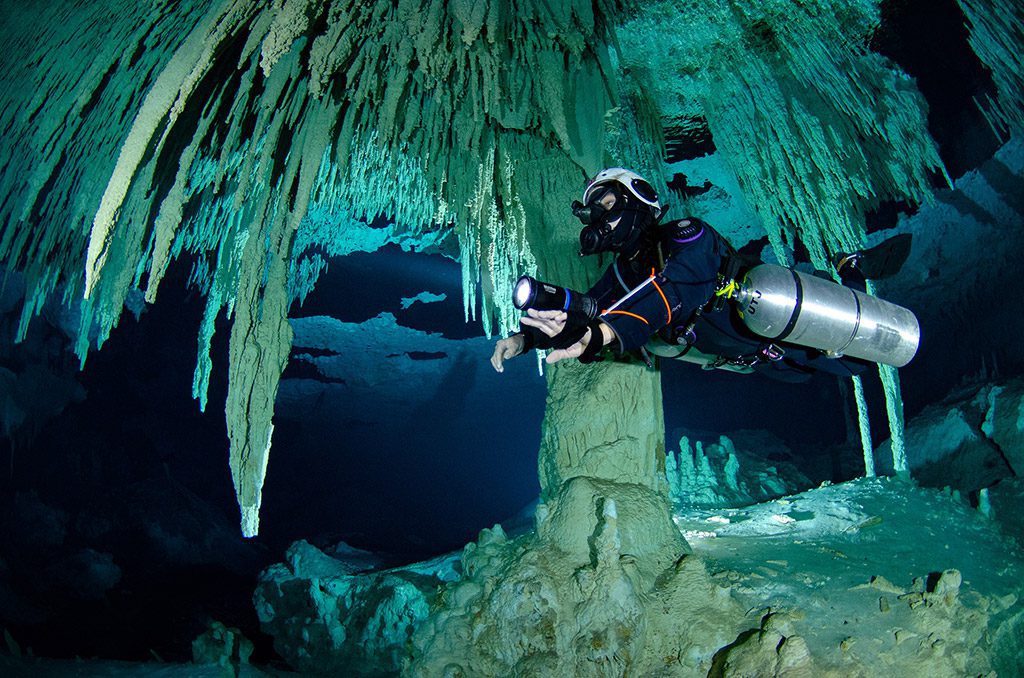
And your implication is that sidemount has opened up more access?
Now that sidemount has become accepted as an entry-level configuration, it has opened cave diving to many truly excellent female instructors, divers, and explorers that might not have ever become cave divers in backmount.
About 60 percent of my students are petite females, and many of them have become excellent explorers pushing boundaries in various countries. It’s encouraging to see the demographics shift here in Mexico, and sidemount has much to do with that.
What can be improved in sidemount in general?
Sidemount has been around since the 1950s. Modern Mexico-style sidemount became popular around 2008 when Steve Bogaerts began developing that Razor system. Many other manufacturers quickly came out with similar streamlined systems, each with innovations and tweaks. Since then, sidemount has continued to evolve.
As a community, I hope we continue to improve sidemount gear and diving techniques. As a sidemount instructor, I refine my craft. I have (and will continue to) change my protocols as I find more straightforward and uncomplicated methods, and I reach out to my alum group to let them know about revised procedures. In fact, I have a standing dictate with all of my students that if you find a better way to do something or a way that you like better than I taught you in my course, I really want to know about it!
Return to: The Who’s Who of Sidemount
DIVE DEEPER
InDEPTH: Meet Explorer Natalie Gibb by Evan Kornacki
Speaking Sidemount: E018- Sidemount & Cave Exploration with Natalie Gibb
Speaking Sidemount: E036 – Somos Los Cenotes featuring Phillip Lehman, Natalie Gibb & Vincent Rouquet-caltha
Speaking Sidemount: E076 Looking Back – The Best of Speaking Sidemount
Shearwater Research Blog: EXTREME (AND NOT SO EXTREME) MULTISTAGE SIDEMOUNT CAVE DIVING WITH AI By Natalie Gibb
DIVER mag: Sidemount versus Backmount by Nat Gibb
